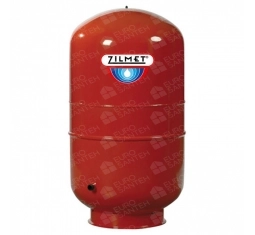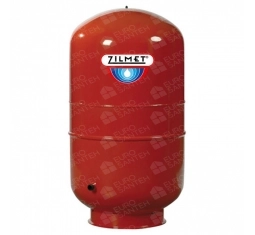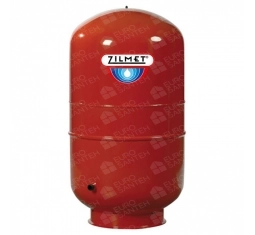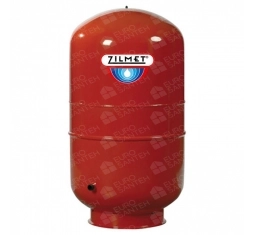Expansion tanks for heating systems
Expansion tanks for heating systems are integral components in modern heating systems, designed to maintain pressure stability and prevent potential issues associated with the thermal expansion of water. In this in-depth exploration, we will delve into the importance of these components in heating systems, examine their diverse applications, and highlight key considerations in choosing and installing these crucial elements.
The Significance of Expansion Tanks for Heating Systems:
Heating systems, whether residential, commercial, or industrial, experience constant temperature fluctuations, causing changes in water volume. Expansion tanks for heating systems are engineered to compensate for this thermal expansion, preventing pressure build-up and ensuring the stable and efficient operation of the entire heating system.
Applications of Expansion Tanks in Heating Systems:
-
Residential Heating Systems: In homes, expansion tanks for heating systems manage the thermal expansion of water, maintaining consistent pressure and ensuring the effective operation of the heating system.
-
Commercial Buildings: Commercial establishments, including offices and shopping centers, rely on expansion tanks to regulate water pressure, contributing to a reliable and uniform heating supply throughout the building.
-
Industrial Heating Systems: Industrial facilities with high-temperature requirements benefit from expansion tanks, crucial for maintaining system safety and efficiency in the face of thermal expansion.
-
District Heating Systems: In district heating systems serving multiple residences, expansion tanks prevent excessive pressure, ensuring uniform heat distribution to all users.
Key Components and Types of Expansion Tanks:
-
Diaphragm Expansion Tanks: Featuring a flexible diaphragm that separates the water chamber from a gas-filled compartment, diaphragm tanks prevent pressure spikes by allowing the diaphragm to flex with water expansion.
-
Bladder Expansion Tanks: Similar to diaphragm tanks, bladder tanks utilize a flexible bladder to separate the water and gas phases, accommodating fluid volume changes by expanding and contracting.
Factors to Consider When Choosing Expansion Tanks for Heating Systems:
-
System Type: Identify the specific heating system type (e.g., forced hot water, steam, radiant heating) to choose the appropriate expansion tank type.
-
Expansion Capacity: Calculate the required expansion tank capacity based on the anticipated volume expansion of the heating system fluid.
-
Pressure Rating: Ensure that the expansion tank's pressure rating aligns with the maximum pressure expected in the heating system.
-
Material of Construction: Consider the material of the tank, selecting corrosion-resistant options such as stainless steel or non-corrosive alloys based on the heating system fluid composition.
-
Installation Requirements: Take into account spatial constraints and installation requirements when selecting the type and configuration of the expansion tank.
Benefits of Expansion Tanks for Heating Systems:
-
Prevention of Pressure Fluctuations: Expansion tanks ensure stable pressure, preventing sudden fluctuations that could damage heating system components.
-
Enhanced System Efficiency: By maintaining stable pressure and reducing stress on components, expansion tanks contribute to the overall efficiency of heating systems.
-
Safety Assurance: Prevention of excessive pressure contributes to the safety of heating system operation, reducing the risk of failures and leaks.
-
Extended Lifespan of Components: Protection against pressure fluctuations and reduced equipment cycling contribute to the longevity of pipes, pumps, and other heating system components.
Installation and Maintenance Tips for Expansion Tanks:
-
Proper Sizing: Ensure that the expansion tank is correctly sized for the heating system. An incorrectly sized tank may lead to inefficiencies.
-
Correct Placement: Install the expansion tank in a location with adequate support and follow the manufacturer's recommendations regarding orientation.
-
Pressure Adjustment: Adjust the pre-charge pressure of the expansion tank according to system specifications for optimal performance.
-
Regular Inspections: Periodically inspect the expansion tank for signs of wear, corrosion, or damage. Promptly address any issues to prevent system inefficiencies or failures.
-
Venting Procedures: Follow proper venting procedures during installation to eliminate air from the tank, ensuring it functions as intended.
Cost Considerations for Expansion Tanks in Heating Systems:
-
Comparing Costs: Compare prices from multiple suppliers to identify competitive offers for expansion tanks with similar specifications.
-
Brand Reputation: Consider the reputation of the brand or manufacturer. Well-established brands often provide higher-quality products but may come with a premium price.
-
Features and Specifications: Expansion tanks with advanced features, such as corrosion-resistant coatings or integrated pressure control mechanisms, may have higher upfront costs.
-
Warranty and Support: Check the warranty offered by the manufacturer and the availability of customer support and after-sales services.
Conclusion: Optimizing Heating Systems with Expansion Tanks:
In conclusion, expansion tanks for heating systems are indispensable components that contribute to the stability, efficiency, and safety of heating systems. Understanding the specific requirements of the heating system, selecting the appropriate type of expansion tank, and adhering to proper installation and maintenance practices are crucial steps in optimizing the performance of heating systems, ensuring long-term reliability and cost-effectiveness.










